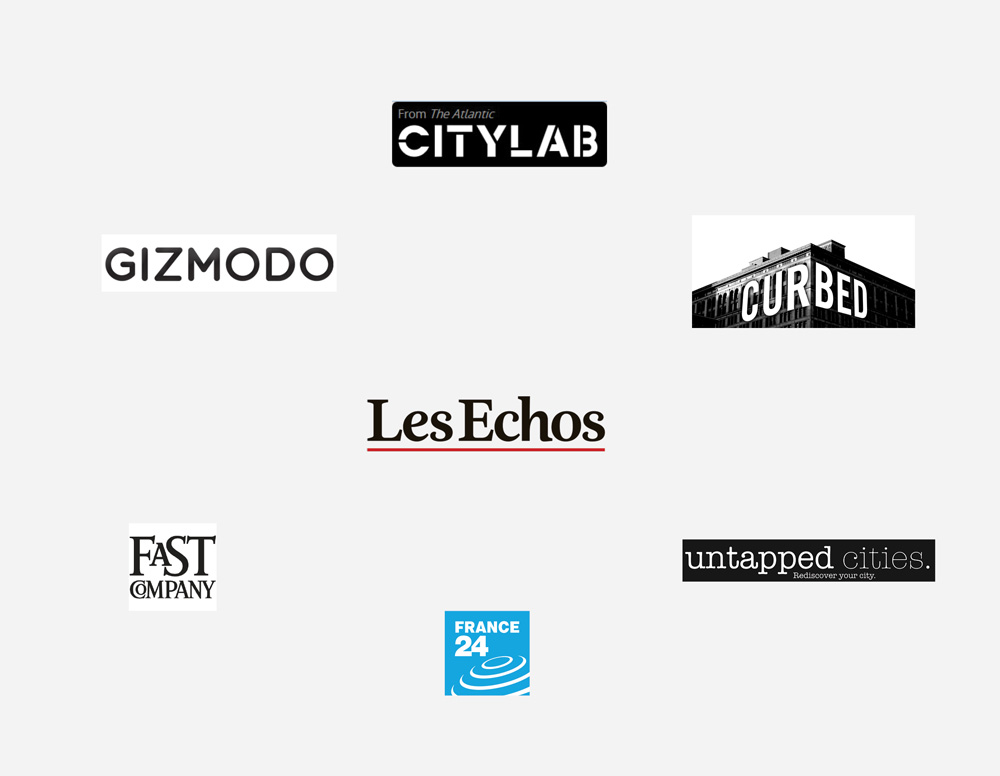We recently announced our latest project Urban Layers – an interactive map that explores the structure of Manhattan’s urban fabric.
The project is a part of an ongoing research focused on the intersection of open data and urban planning. In that sense, visualizing historical data marks the begging of a long-term initiative.
At that point we’ve used open data and some of the latest mapping technologies to render more than 45000 buildings and allow user-interaction with the map.
We are happy to trace and track all of the positive feedback and shout out a big “Thanks” to everyone who shared the project!

In the Media
We were happy to see Urban Layers gain some attention as it was named Map of the week by Gmaps Mania.
” Urban Layers is an incredible new mapped visualization of Manhattan’s building history. The map uses building construction data from PLUTO with Mapbox GL to create a highly responsive and interactive tool to explore the history of building construction in central New York.”
Mapping the History of Manhattan’s Growth
Keir Clarke — GMapsMania
Michelle Young — founder of @untappedcities published a great article about the project:
“A map tool that opens with a quote from Rem Koolhaas’ Delirious New York? How could we resist?”
The map was also published on FastCodesign, gizmodo, curbedNY, LesEchos.fr, Lumieres de la ville, Arkitera and featured in a video by France24.
“Morphocode has done their fair part in decoding the building hullaballoo with Urban Layers, an interactive map that allows users to scroll through different decades while it depicts how development spread across the city.”
An incredible new Mapbox GL powered mapped visualization of Manhattan's building history. http://t.co/CG2qXPhdNC pic.twitter.com/AiuWhe19WB
— gmapsmania (@gmapsmania) October 9, 2014
This map shows Manhattan transforming from the countryside into a metropolis http://t.co/wuCPamZujQ pic.twitter.com/ryJjO9iInE
— Gizmodo (@Gizmodo) October 10, 2014
A new tool tracks Manhattan's rise, block by block, since 1765 http://t.co/j7QOjGsYSh pic.twitter.com/F84nxGvDN8
— CityLab (@CityLab) October 21, 2014
This neat interactive map shows how development spread in manhattan over 250 years: http://t.co/86nSSogfEF pic.twitter.com/KICjAshvCk
— Curbed NY (@CurbedNY) October 10, 2014
On Citylab
Urban Layers ultimately made it to the front page of Citylab where it became the most popular story. Make sure to read the full article written by Kriston Capps.
“Seeing when those buildings were constructed at the parcel level with a simple slide of a rule is a real advance in data mapping”
On Twitter
The response on twitter was great. Here are some of our favourite tweets:
Urban Layers: http://t.co/vSmjoPj09r interactive map of the History of Manhattan's Growth by @morphocode
— giorgia lupi (@giorgialupi) October 10, 2014
Explore Manhattan's urban fabric in this neat interactive #dataviz by @morphocode http://t.co/tIiBqNtCBn + read their making of!
— Patrick Stotz (@PatrickStotz) October 10, 2014
great Urban Layers project from Morphocode – interactive visualization of Manhattan’s urban history http://t.co/RFOuddacJF
— manovich (@manovich) October 12, 2014
this is incredible, Urban Layers visualizated Manhattan's building history using @mapbox GL: http://t.co/9N5MQz65Oq
— eric gundersen (@ericg) October 9, 2014
Awesome #dataviz from Manhattan http://t.co/74cO4fVpZC using #MapBoxGLJS via @arferrand by @morphocode ^sim pic.twitter.com/l9NOOYOBN9
— Open Data Zurich (@OpenDataZurich) October 10, 2014
Explore the urban layers of Manhattan with this interactive infographic by @morphocode http://t.co/V3UwhpiOow pic.twitter.com/q6Ijqdb2Wf
— CASE (@case_inc) October 7, 2014
Just discovered Morphocode. I'm not an architect, but @morphocode makes me want to be one. http://t.co/AjFJBoiyhG
— Cory MacVie (@corymacvie) October 22, 2014
Great #data visualization showing how old each building is in #NYC http://t.co/oUPgeDgGfC Via @CityLab @morphocode
— Furman Center (@FurmanCenterNYU) October 22, 2014
Wonderful new map from @morphocode shows extant Manhattan buildings since 1765 as timeline reported by @kristoncapps http://t.co/yLzP1hujfz
— Bill Cronon (@wcronon) October 21, 2014
Beautiful! MT @giorgialupi: Urban Layers: http://t.co/OSCz7Ef8Jz interactive map of the History of Manhattan's Growth by @morphocode
— Till Nagel (@tillnm) October 10, 2014
What’s Next?
Urban Layers is a work-in-progress. We have just scratched the surface of what is possible in terms of dynamic urban mapping and we are looking forward to:
Add more ‘Data Layers’
PLUTO – the dataset used in Urban Layers contains various information for each building: year built, footprint, height, ownership, etc. The ‘year built’ data is arguably the most inaccurate field and we are planning to add the rest of the available data to the map.
Adding more data fields and the ability to filter and cross-reference layers will provide a more in-depth look into urban dynamics.
Add more Cities
Adding the rest of NYC, as well as other cities is also something that we are excited about. Amsterdam and Chicago are great candidates for that since they already provide various open data sets.
Do you want to see a particular city/community featured? Drop us a line and let us know.
Fix Bugs
There are a couple of bugs related to the WebGL renderer that prevent to see the map in detail with some hardware configurations.
Better Mobile/Browser Support
We would like to improve the support for touch-enabled devices that support WebGL.
Support the project
The guys at Mapbox were kind enough to provide us with a one year standard plan and we are looking forward to use its full potential. Thank you Eric & Matt!
For anyone else willing to support the project or interested in any kind of collaboration – feel free to contact us !
Hope you’ve enjoyed Urban Layers. Thanks for spreading the word!



